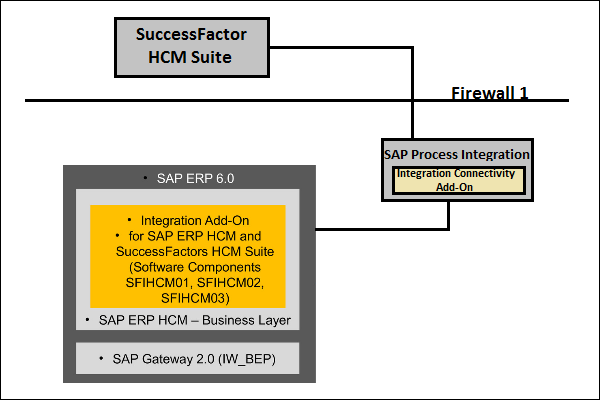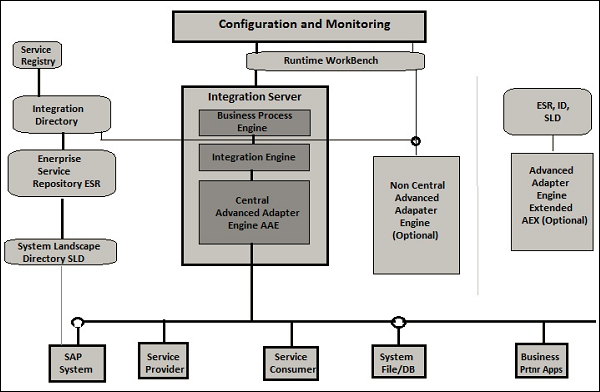SAP SuccessFactors Landscape refers to the overall architectural setup required to integrate, configure, and manage SAP SuccessFactors solutions within an organization’s IT ecosystem. It highlights the interaction between cloud-based SuccessFactors modules, on-premise SAP ERP systems, middleware, and external systems to ensure seamless HR process execution.
In this landscape, organizations can adopt hybrid or full-cloud solutions depending on their digital transformation goals, supported by a robust integration framework for data consistency and operational efficiency. Let’s break down the components of the SAP SuccessFactors Landscape, starting from foundational setups to advanced integration layers.
Key Components of the SAP SuccessFactors Landscape
1. SuccessFactors HCM Suite
At the core of the landscape is the SuccessFactors HCM Suite, a collection of cloud-based modules that cover HR processes such as recruiting, onboarding, employee central, payroll, performance, and learning management. The suite is designed to deliver modern HR capabilities and integrates seamlessly with both on-premise SAP ERP and third-party systems.

2. SAP ERP Integration
For organizations leveraging SAP ERP for core HR functionalities, the integration with SuccessFactors requires:
- SAP ERP 6.0: The traditional on-premise system managing payroll, time management, and organizational data.
- Integration Add-Ons: Specialized software components (SFHCM01, SFHCM02, SFHCM03) that enable communication between SAP ERP HCM and SuccessFactors.
- SAP Gateway 2.0 (IW_BEP): A component that ensures real-time access and connectivity to enable data flow between on-premise systems and the SuccessFactors HCM suite.
This integration is critical in hybrid setups, where some HR processes remain on-premise while advanced talent management capabilities reside in the cloud.
3. Middleware: SAP Process Integration (SAP PI)
The SAP SuccessFactors Landscape heavily relies on middleware to connect various systems within the architecture. SAP PI is often used for this purpose. Its key components include:
- Integration Connectivity Add-On: This ensures connectivity between SAP ERP and the cloud-based SuccessFactors suite, enabling data exchange for employee lifecycle events, payroll synchronization, and compliance reporting.
- Firewall 1 Setup: Ensures secure communication between on-premise SAP ERP and the cloud environment.
SAP PI’s landscape incorporates several layers:
- Integration Server: Houses the Business Process Engine and Central Advanced Adapter Engine (AAE) for managing communication protocols.
- Configuration and Monitoring Tools: Runtime Workbench and Service Directories (e.g., ESR and ID) facilitate error-free data integration.
- Extended Adapter Engine (AEX): For non-central integrations, enabling system flexibility.
4. System Landscape Directory (SLD)
The SLD is crucial for maintaining the overall SAP SuccessFactors Landscape. It acts as a central repository that defines the technical and business systems involved in integration. Key responsibilities include:
- Managing metadata for all systems in the landscape.
- Supporting system upgrades and migrations.
- Ensuring compatibility across integrated systems.
5. Advanced Architectural Capabilities
The SAP SuccessFactors Landscape is designed to address complex HR needs through advanced features:
a. Configuration and Monitoring
The integration server includes robust tools for monitoring integration processes and identifying errors. Configuration tools like Integration Directory and ESR simplify the mapping of HR processes between systems.
b. Non-Central Adapter Engines
For organizations with decentralized IT setups, non-central adapter engines provide the flexibility to process data locally while maintaining synchronization with the central ERP system.

c. High Security
Security is a cornerstone of the SAP SuccessFactors Landscape. Features like encrypted data transmission, firewall setups, and role-based access ensure compliance with global standards such as GDPR.
6. Hybrid and Full-Cloud Scenarios
Organizations can implement the SAP SuccessFactors Landscape in multiple ways:
- Hybrid Approach: Retain core HR functions like payroll on SAP ERP while adopting SuccessFactors for talent management. Middleware enables consistent data flow between systems.
- Full Cloud Deployment: Migrate all HR processes to the SuccessFactors suite, eliminating on-premise dependencies. This approach is more future-ready, leveraging SAP’s cloud innovation capabilities.
Conclusion
The SAP SuccessFactors Landscape provides a flexible and secure framework for integrating cloud-based SuccessFactors solutions with on-premise SAP ERP systems and other third-party applications. By combining robust middleware, advanced monitoring tools, and modular architecture, the landscape empowers organizations to achieve seamless HR process execution while supporting hybrid or full-cloud transformation. This architecture ensures organizations can adapt to the evolving needs of workforce management in today’s dynamic business environment.
